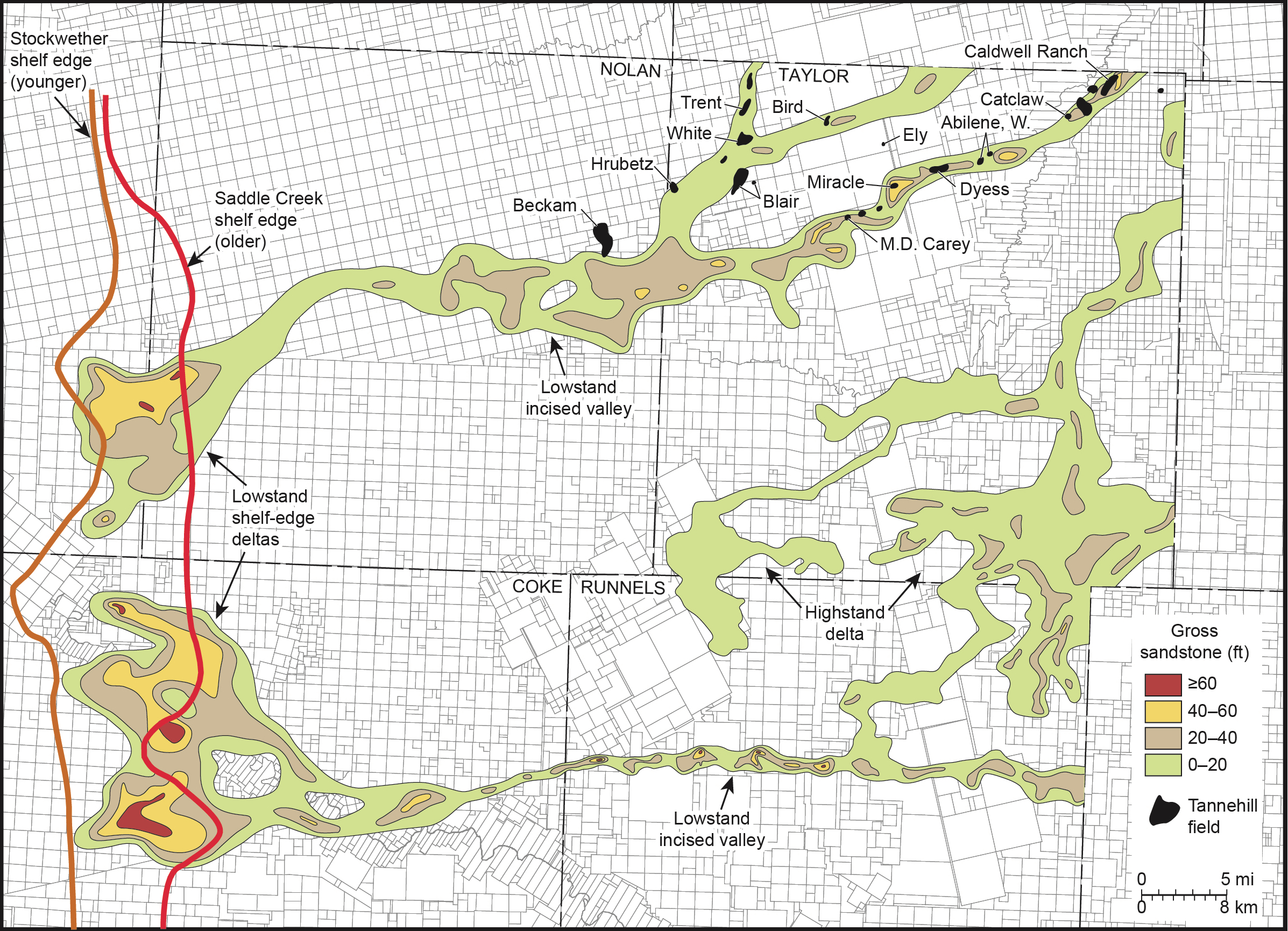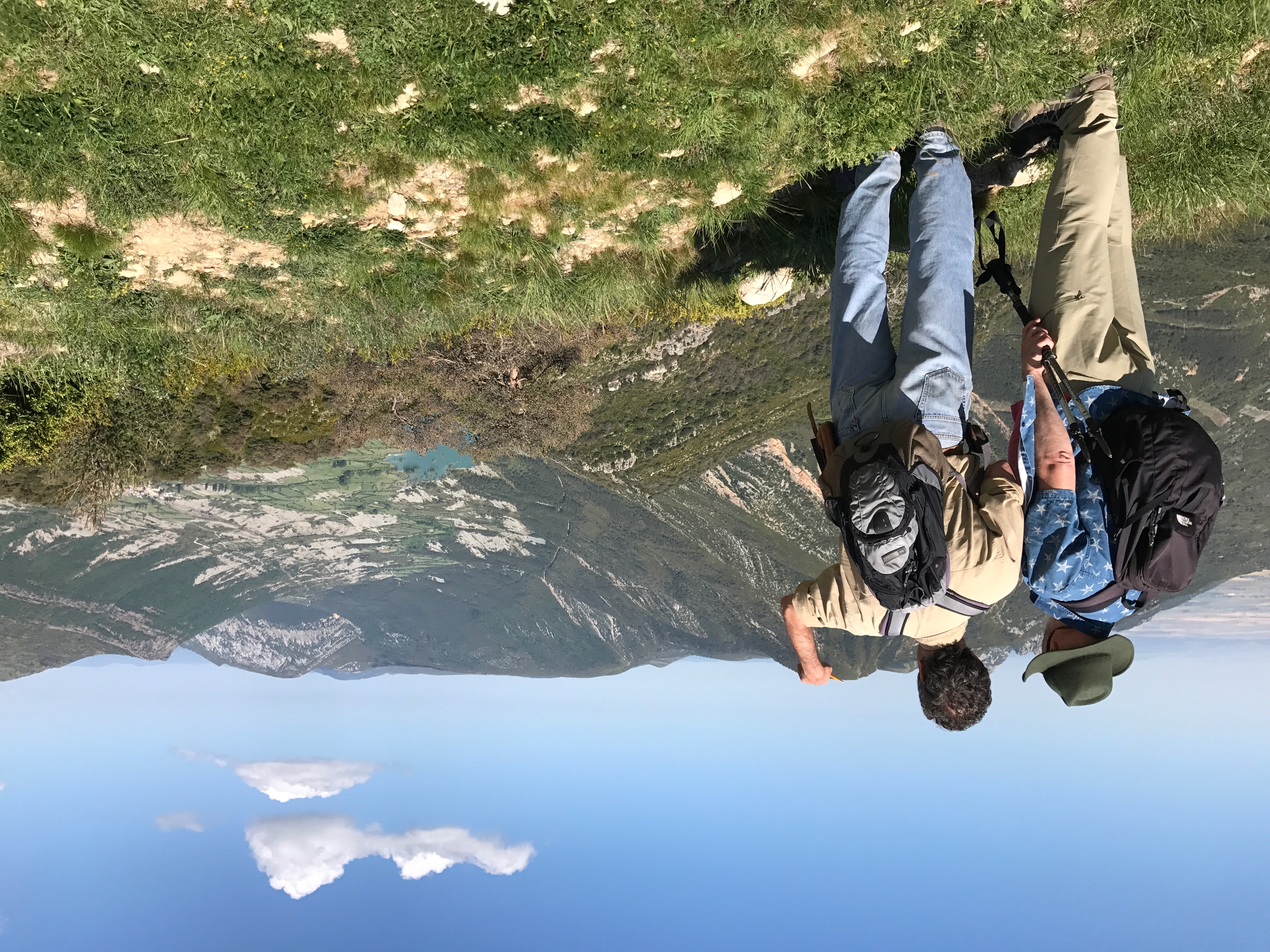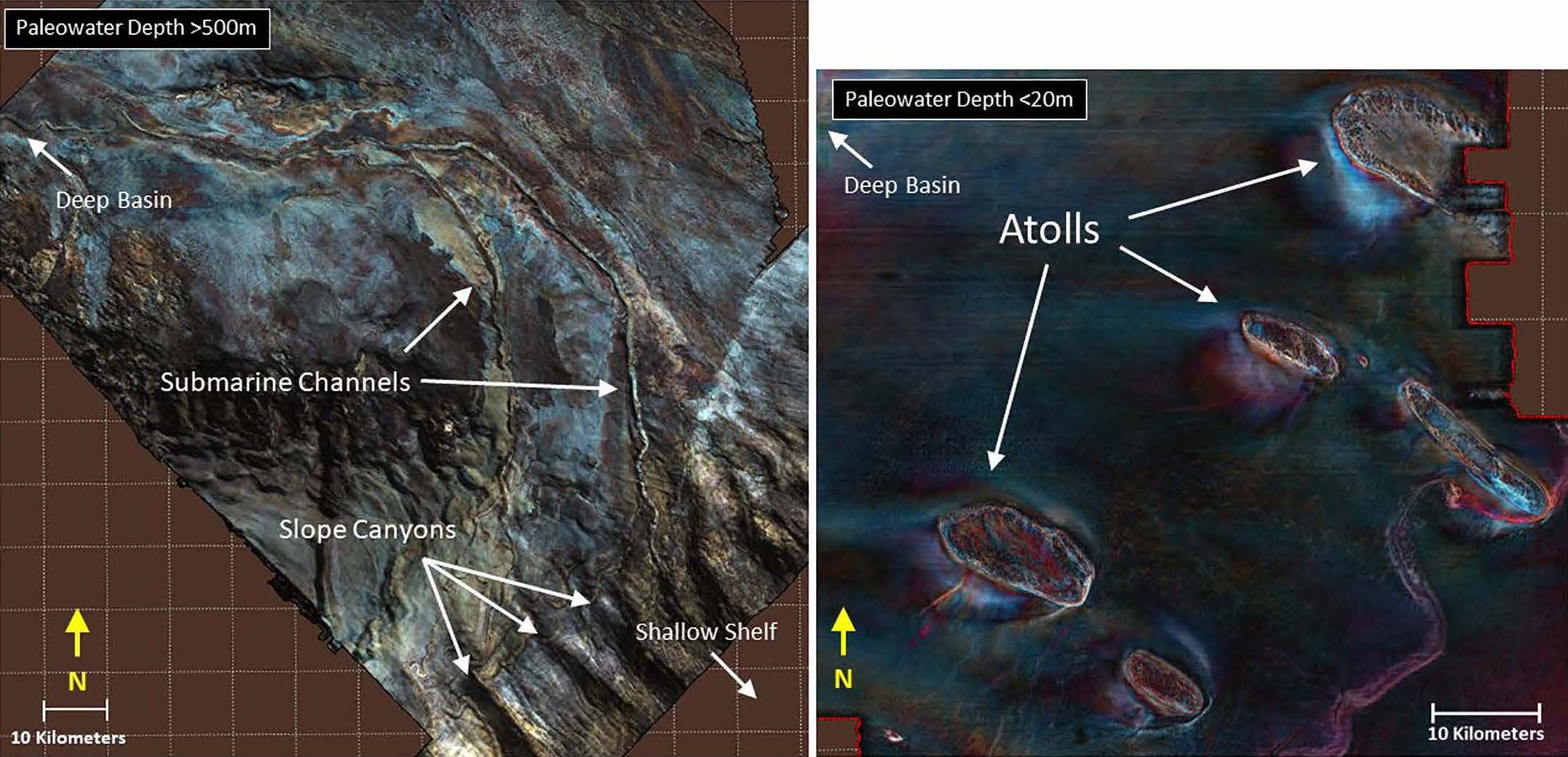June 15, 2020

William A. Ambrose
STARR Research Activities in 2020
In 2020, the STARR program embarked on a major research initiative on the Pennsylvanian in the Eastern Shelf of the Permian Basin. This project addresses the complex relationships that exist among Pennsylvanian stratigraphy, depositional systems, and tectonics, and their controls on sediment-delivery systems and reservoirs in this mature and prolific region in the U.S. southern Midcontinent. Results of STARR’s Eastern Shelf research will lead to a better understanding of hydrocarbon reservoir distribution on both local and regional scales, providing an improved exploration framework for oil and gas operators in the Permian Basin, currently the most productive basin in the United States.
STARR is currently focusing its efforts on (1) mixed carbonates and clastics in the Strawn Group, (2) slope and shelf-edge reservoirs in the Cisco Group, and (3) incised-valley-fill deposits in the Tannehill Sand. All of these stratigraphic units contain incompletely explored exploration fairways that are being mapped by STARR researchers. Later in 2020, STARR will conduct a core workshop that showcases the Strawn, Cisco, and Tannehill, with additional examples from other important units such as the Caddo Formation and Canyon Group. This core workshop will provide an opportunity for participants for a hands-on examination of major reservoir rock types in the Eastern Shelf of the Permian Basin.

Incised-valley fill and highstand deltaic deposits and major oil and gas fields in the Tannehill Sandstone in Taylor, Nolan, Coke, and Runnels Counties. Modified from Hentz (2019).

Michael Hudec
The Evolution of Salt Tectonics in the Pyrenees
Michael Hudec has recently finished a manuscript detailing his research on the geology of the southern Pyrenees in Spain—specifically, the role of salt tectonics in the evolution of the mountain range. It has long been recognized that salt served as the major detachment during collision between Iberia and France. It has also been recognized that many salt diapirs were caught up in this collision. However, no one has ever looked at how the distribution of salt basins and diapirs influenced the deformation. Hudec argues that salt depositional configuration and preexisting salt structures both played key roles in the evolution of the Pyrenees during both extensional and contractional tectonic events. His work has implications for the behavior of salt in other mountain belts and in deep-water fold-and-thrust belts around the world.

Mike Hudec and Frank Peel in the southern Pyrenees, 2017.
Sarah Machin
Studying the Northwest Shelf of Australia
The Northwest Shelf of Australia hosts a barrier reef system comparable to the modern-day Great Barrier Reef. This ancient system was deposited 10–20 million years ago. With high-quality geophysical data, we're able to map out individual reef complexes, dramatic canyons, and stunning atolls. Studying environments like this gives us a better idea of how carbonates such as limestones develop over time, how changes in climate and sea level affect their longevity, and what roles ocean circulation and tectonic plate movement play in their growth and demise.

Northwest Shelf of Australia approximately 10-20 million years ago

Farzam Javadpour
The Nanoscience of Shale Gas and Tight Oil Reservoirs
Geoscience is a branch of science dealing with the physical and chemical constitution of the Earth and its atmosphere. Nanoscience is the study of structures and materials on the scale of nanometers. To give you an idea of how small a nanometer (nm) is, a string of hair has a diameter of about 75,000 nm, and the red blood cells in our body are about 7,000 nm in diameter. Structures at the nanometer scale take on fascinating properties that we can normally ignore at large scales.
One intriguing nanostructure of geological systems are the nanoscale pores, or “nanopores,” in shale gas and tight oil underground reservoirs. These deep geological formations host enormous amounts of oil and gas generated over geological time—on a scale of millions of years. There are many interconnected nanopores in shale gas and tight oil reservoirs. Both natural gas and oil can be produced from these tight reservoirs thanks to the horizontal drilling and multistage hydraulic fracturing technology.
The Darcy equation is a well-accepted equation used to related pressure gradient and flux in porous media. The oil industry has used the Darcy equation over the past few decades with success in conventional oil and gas reservoirs, in which the pores are tens to hundreds of micrometers in diameter—several orders of magnitude larger than the pores in shale and tight oil reservoirs. The small size of the nanopores in shale and tight oil systems makes the Darcy equation inaccurate for modeling gas and liquid flow in such tight systems.
Farzam Javadpour’s research focuses on the transport of water, gas, and oil into shale and tight oil reservoirs, and has applications in hydraulic fracturing design. Gas flow models and oil flow models are needed to assess gas and oil in place and production deliverability and further production optimization in these reservoirs. This research can be used to optimize fracture-to-fracture spacing and well-to-well spacing, which reduces the cost-per-barrel and makes developing these strata more economically and environmentally feasible.

The Bureau’s Nanogeosciences Laboratory, run by Farzam Javadpour, is equipped with state-of-the-art atomic force microscopy (AFM) equipment seen here in action.